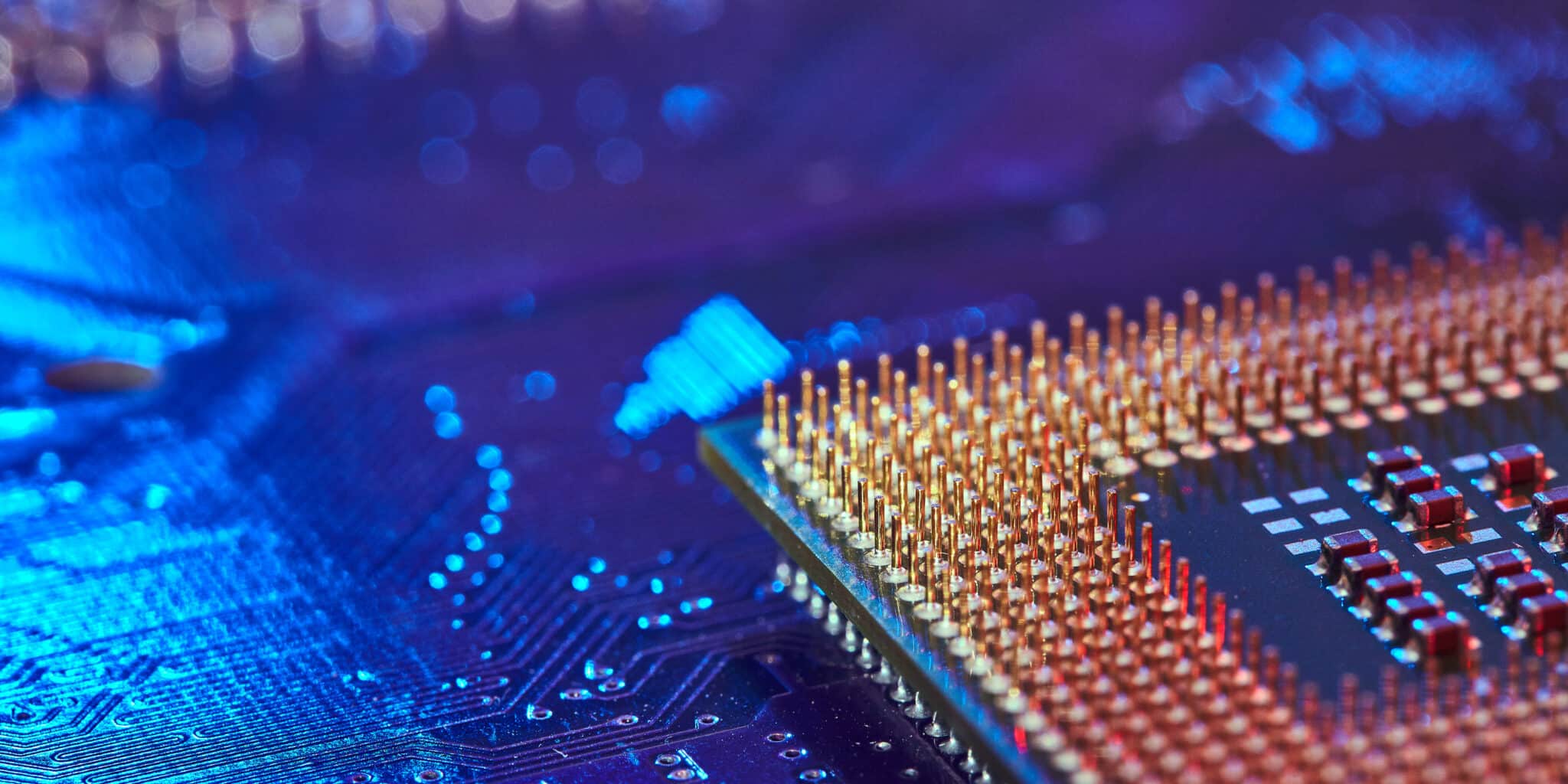Advanced technologies such as neural networks have found wide application in image recognition, big data processing, financial analysis and many other fields. However, their training requires considerable computational resources and energy consumption, posing challenges for their widespread use and further development.
To meet the evolution of AI algorithms, exponential growth in computing resources is required. The memristor-based hardware accelerators offer a promising solution to address power efficiency and latency issues in large AI model implementations. This approach eliminates constant data transfer between processing and memory units in the architecture by Neumannleading to significant savings in time and energy.
The memristor: the promise of persistent memory and advanced computing.
The memristor, considered the fourth basic element in electronic circuits together with capacitor, resistor and inductor, it is a nonlinear passive component. It behaves like a variable resistor, changing its resistance based on the amount and direction of the current flowing through it. This feature allows it to retain information even when it is not powered, ensuring immediate restoration of the previous state upon restart. With the decline of the binary system, mebristors offer greatly increased computing capacity, with each component capable of transmitting multiple signals and storing analog information, similar to human synaptic processes.
Their memorization ability occurs through resistive switching, which changes the electrical resistance of the device in response to applied voltage. This process allows the writing and reading of stored data. Furthermore, the ability of memristors to represent the electronic state through analog signals opens the way to more extensive data processing than the traditional binary system, thus leading to a new era of more powerful memories and computations than conventional transistors.
Solve the bottlenecks of traditional IT systems
The problem boils down to bottlenecks imposed by traditional computing systems built using transistors, which keep their memory and processing units separate, requiring energy-intensive data transfers and degrading performance between them. Perhaps an even greater disadvantage is that their memory requires constant power to store information, which further increases energy consumption.
To solve this problem, researchers propose the alternative based on memristori.
Memristors can be used to create devices that store data because they have the ability to dramatically reduce the time and energy needed to transmit data between memory and processors in traditional microchips. They could be perfect for building neural networks, artificial intelligence systems for processing medical scans, and enabling driverless vehicles.
The revolutionary potential of memristors in artificial intelligence
In a study published in Advanced Physics Research, researchers studied training the neural network using a new memristor design which stores information in a unique material composed of germanium, tellurium and antimony.
This substance exists in an amorphous phase, but when exposed to an electric current and a change in temperature, it displays ordered crystalline regions. Depending on the properties of the pulse, such as the intensity and shape of the signal, the number and size of these regions change, consequently influencing the electrical and optical properties of the material, which are preserved after the current is interrupted. In this way, information can be recorded in the memristor and read from it by repeatedly applying an electric current.
The researchers managed to create fifteen distinguishable crystallization stages in the memristor, each corresponding to specific information to train the neural network. Basically scientists used memristors to simulate a neural networkwhich recognized handwritten numbers with over 96% accuracy.
This accuracy represents an improvement of about 5% over other memristor designs, indicating a promising direction for this type of computing technology. But there are still significant hurdles to overcome before this technology can be implemented in real-world computing systems.
System integration and scalability pose considerable challenges. However, researchers remain hopeful, imagining a future where memristors will play a critical role in training large neural networks. Featuring smaller, more powerful and significantly more energy efficient drives than conventional computers.
Graduated in Electronic Engineering from the University of Palermo
